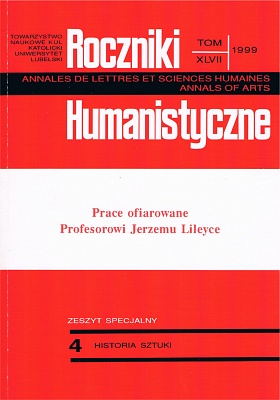Fenomen obrazów kultowych w kulturze chrześcijańskiej
Abstrakt
The origins of cult images in Christianity are connected with the cult of relics which make present the person of a saint. Especially the so-called direct relics are closely related to the images of a saint in paintings, for they do not constitute his material part, but remind and represent him.
In the origins of Christianity the Neoplatonic theory of aesthetics supported the devotional practices. It was first accepted in the East and then transplanted in the West. The theoretical foundations of a cult painting were grounded on it, the theory of icon in Byzantium. The cult of paintings, which was in the East from the 5th century onwards, with time the icon replaced the cult of relics. The painting gains its theological depth owing to the decisions made at the Second Council of Nice in 787.
The West accepted the cult rank of an image in religious practices. In its theoretical enunciations, however, it emphasized its didactic and commemorative function.
The author particularly stresses the role of an image in the contexts of the cult of saints. The forms of that cult, making the primitive loca sacra, have in time been replaced by the cult of paintings and worship of the so-called miraculous sites. An awareness emerged of its presence and action, spatially unlimited, and magnified by the copying of paintings. From the 14th century onwards the painting gradually gained that significance which relics previously had . It became a personification of sacrum, the saint. That type of a pilgrimage site with the icon as the main medium of cult prevailed in the Middle Ages. The Tridentine Council drew conclusions from the debate with Protestants about the function of paintings in a cult. Thus the medieval theological interpretation and resolution of the Second Council in Nice has been confirmed.
Such tradition has survived in Christian culture up to our times, which has been confirmed by the Constitution on the Holy Liturgy in the documents of the Second Vatican Council.
At the moment, despite many examples of the care of introducing new art into contemporary sacral architecture, it is difficult to show examples of cult works.
The phenomenon of a cult painting in Christian tradition is a very subtle matter, and it calls for appropriate approach. One must not forget that art was and still is a medium of faith.
Copyright (c) 1999 Roczniki Humanistyczne

Utwór dostępny jest na licencji Creative Commons Uznanie autorstwa – Użycie niekomercyjne – Bez utworów zależnych 4.0 Międzynarodowe.





